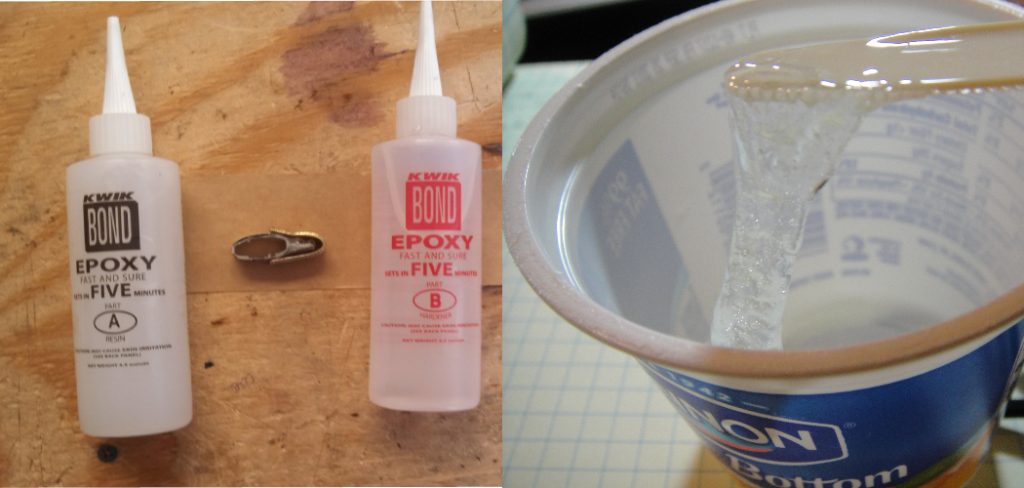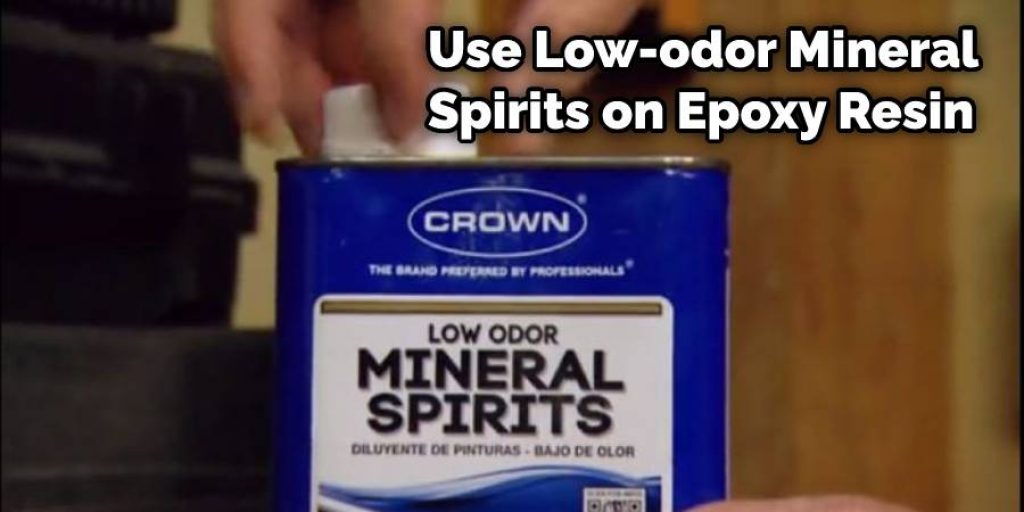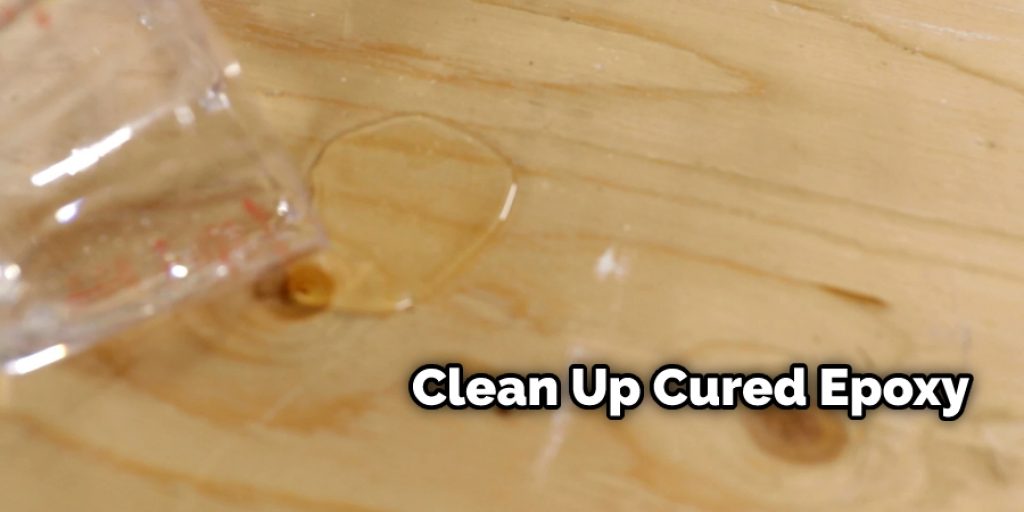How to Remove Dust From Cured Epoxy Resin
Whether you’re a professional resin artist or enjoy working with epoxy resin occasionally, it’s essential to keep your workspace clean. In this blog post, we’ll show you how to remove dust from cured epoxy resin so that your projects can look their best.

Epoxy resin is often used in various applications, from home repairs to industrial uses. It can be an excellent choice for many projects because it is strong and relatively easy to work with. However, one downside of epoxy resin is that it can easily attract dust and other debris. Read on to know more!
What Causes Dust on Cured Epoxy Resin?
Often, especially with clear epoxy resin, dust can get trapped on the epoxy surface even though it appears to be cured. Dust is stuck between the layers on a microscopic level. The most common causes are:
1. Hygroscopic particles in the air attach themselves to the layers of epoxy.
2. Dust attached itself to an area of non-cured resin.
3. The surface was not properly degassed, allowing for pockets of gases.
4. Insufficient layers were applied, allowing the dust to penetrate between layers.
5. You don’t live in a cleanroom or air-conditioned space so that you will have dust.
6. You didn’t remove dust before applying epoxy resin.
7. Making an existing crack or gap wider by sanding allows more dust to enter.
10 Ways on How to Remove Dust From Cured Epoxy Resin
1. Brush the Dust Away

Sometimes, brushing it away with a soft brush can remove the dust if the dust is light. However, be careful not to brush too hard and damage the surface.
2. Use Air Pressure
One of my favorite ways to remove cured dust is with an air compressor. I have a plastic cup hooked up to the end of the hose that allows me to spray out most of the dust without blowing it in every direction. This only works when you are working with smaller quantities in your garage or workshop.
3. Wipe it Down
Sometimes a quick wipe down with a damp cloth can remove any dust on the surface. Just be careful not to get the resin wet if you’re going to continue working with it.
4. Use an Adhesive
There are all kinds of products available to help pick up dust, everything from cloths, sheets, and rollers. We recommend keeping a lint-free roller in your shop for just these occasions. They come in different sizes and work great for removing the dust that has settled into cracks or small crevices.
5. Vacuum It Up
Using a vacuum with a soft brush attachment is a great way to remove cured dust from your resin projects. It will also help to keep your work area clean.
6. Damp Mop

If you’re working on a floor or other large surface, using a damp mop can help to remove the dust. Just be careful not to leave any standing water on the surface as it can cause some issues with curing.
7. Dry Swipe
This is an excellent technique if you’re working with a small area and don’t have any other means of dust removal available. Use a dry cloth or paper towel to wipe the surface and remove the dust. This is particularly helpful when working with epoxy in a garage or shop.
8. Use Acetone and an Absorbent Pad
This is a great way to remove any dust that has settled into tiny crevices or between sheets of paper. Dip the absorbent pad into the acetone and hold it against the surface for a few seconds. The dust will stick to the pad and can be easily removed.
9. Blow it Off with a Hairdryer
If you don’t have access to an air compressor or vacuum, a hairdryer can blow away any dust on the surface. Just make sure that you are blowing in the direction of your work. If the dust is still tacky, this technique can help remove it without affecting anything else.
10. Use Low-Odor Mineral Spirits

This is precisely like the acetone method but uses Low Odor Mineral Spirits instead of acetone. We recommend wiping down the surface afterward with acetone to remove any residue from the mineral spirits.
Some Tips to Prevent Dust From Cured Epoxy Resin
1. Use a brush to keep as much dust as possible out of the container.
2. Cut long straight lines from the end of a toothpick to a capital ‘T’ shape.
3. Use a clean piece of paper or card stock to push dust, lint, and fibers off the tap while brushing the dust towards the other side before turning over.
4. Open windows and run an exhaust fan during the resin cure process while working in a well-ventilated area.
5. After the resin has cured, use a vacuum cleaner with the brush attachment to remove any remaining dust. Static electricity will cause the dust to adhere to the surface, so using this type of vacuum cleaner.
6. If there are still some stubborn dust areas after vacuuming, use a damp cloth to wipe the surface and then immediately dry it with a clean cloth.
7. If it is still not satisfactory, use a small amount of acetone or lacquer thinner on the cloth to wipe the surface until it is dust-free.
How Do You Clean Up Cured Epoxy?

Cured epoxy resin is usually hard and strong, but it can attract dust. Dust particles may settle on the hard surface, so dust cleaning is necessary to keep the material clean. In addition, the epoxy may have dust particles from the air or your working environment, so cleaning before the application is essential.
The type of epoxy should be considered because some may allow for a certain amount of dust to settle into their surfaces without affecting performance. Cleaning off any large chunks and specks of dust should be done before curing, and then a light dusting every so often is usually all that is needed to keep the material looking good.
What Types of Epoxies Require Dust Cleaning?
Epoxies with a high dust content should be cleaned before application. If too much dirt is on the surface, it may affect the adhesion properties. Also, keep in mind that dust particles can cause defects in the initial layer.
Epoxies are available in thin liquid, paste, or heavy-duty filler. They are mixed with hardeners to obtain a high viscosity when applied. The above rule also applies to epoxies used for immediate repairs in construction and furniture restoration projects.
Conclusion
To keep your home or work environment clean, you must take steps to remove dust from cured epoxy resin. There are a few ways on how to remove dust from cured epoxy resin. You should avoid using any solvents, abrasives, or liquids on the epoxy surface as this can damage it and affect its durability.
We recommend using an air compressor with a brush attachment if possible; otherwise, sweep the dust off gently and carefully while wearing protective gloves. This blog post has examined the best ways for doing so and provided expert advice on how to do this safely. As always, we hope these tips help! Now, go out there and make sure your workplace stays as clean as possible! If you have any other questions about our services, please don’t hesitate to reach out!




